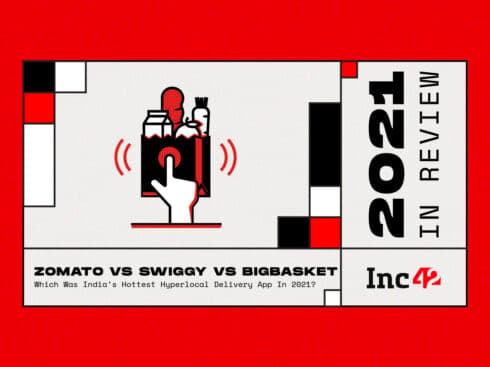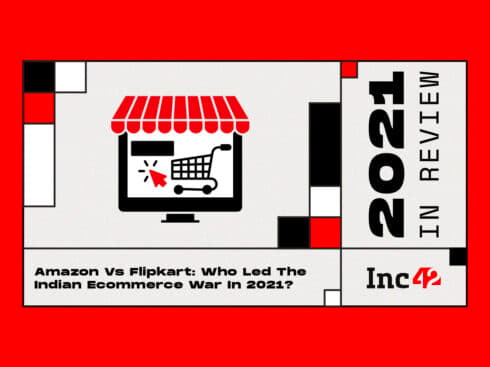Online food delivery is spearheading the growth of foodtech sector in India
Growing urbanisation is an important growth factor for food delivery as well as aggregation
Customer retention and brand loyalty continue to remain a matter of concern
The wave of urbanisation in India has resulted in an array of lifestyle changes in the Indian society. Although, as of 2018 only 34% (460 Mn) of the total population in the country was residing in urban regions, there was a 27% surge in the urban population of India from 2008 (363 Mn) to 2018 (460 Mn). On the contrary, the rural population witnessed a minimal surge of 7% during the same period. Among BRICS nations, India recorded the second-highest surge in the urban population, with the highest being China at 34%.
This growing urban population is one of the biggest catalysts for the growing demand for consumer internet products and tech services. Among the contemporary tech startup sectors, one of the primary beneficiaries of urbanisation is the foodtech industry — which includes companies operating as tech enablers for the food serving and F&B industry. The impact of foodtech in India can be best observed from the changing habits of food consumption in India. As of 2019, the total online food delivery users stood at 182 Mn+, growing at a rate of 12% (2018 to 2023).
In addition to the growing demand for foodtech applications in India, the investor confidence towards foodtech businesses also remains high. As per DataLabs by Inc42 estimates, the number of unique funded startups in the foodtech space surged 3x between 2014 to 2018. On the other hand, the median ticket size of funding deals in this space witnessed an increase of 2x during the same period.
Apart from the rocket growth for urbanisation in the country, other factors fueling the popularity of foodtech startups include a primarily young population with rising disposable personal income, higher internet consumption, value creation through technology and the changing lifestyle of Indians in cities with longer working hours and less time to spend at home. All these factors combined are increasing the addressable market for foodtech companies in the Indian market and giving rise to new-age business models such as cloud kitchens.
High Demand And Finite Supply: India’s Foodtech Story
Among the other foodtech subsectors, online food delivery is spearheading the growth of the overall sector. The main reason behind the growing popularity of this sub-sector can be linked to the increased number of internet users in the country due to the availability of affordable 4G mobile internet along with smartphones. This has resulted in the emergence of a high volume of market players offering similar services with very little distinction between each other.
But at the same time, the supply base or the number of restaurants in the market is growing at a slower pace, and it can be considered finite. Despite the rise of food delivery business, restaurants do not see any key value proposition in either of the market leaders in food delivery i.e Swiggy or Zomato to side with just one over the other. Here again, the restaurant goes with the platform that charges the lower commission, if at all it has to choose.
Young Population Creates Demand
It’s no secret that India has one of the youngest populations in the world. The median age of the Indian population stands at 27 years, compared to the BRICS average of 32 years.
The combination of young demography along with high disposable income creates a sustainable demand for new-age products in the market. The customer persona created in this situation is leaning towards impulsive purchases rather than rational thought-out decisions. The willingness to try out new products and services is also higher in this age group than the population that is relatively older
Unravel The Emerging Trends In Indian Foodtech MarketThe rising internet user base of the country has widened the addressable market for consumer-facing foodtech applications and enabled companies to target those potential customers that are beyond the urban boundaries of the country.
Discounts Determine Brand Loyalty
In the era of digitalisation, the price wars in the market have taken a new form— discounts and cashbacks. The concept of brand loyalty based on user experience and quality seems to be obsolete in the online food delivery market. If we look at the market share of different players in the domain, Zomato (35%) and Swiggy (25%) combined have secured around 60% of the total market.
Aggressive discounts ranging between 25% to 60% per order has been a decisive factor for these two players in terms of capturing a majority market share. In addition, the high operational cost of the online food delivery business is having an impact on the financial performance of these companies. For instance, the surge in loss (FY’18 to FY’19) incurred by Zomato and Swiggy was 7x and 6x respectively.
The growth of the private sector in India, particularly startups offering gig economy jobs, will enable more urban migration as seen in previous years. As a result, the prevalence of western or metropolitan lifestyle will increase.
Consequently, this is expected to give rise to new-age expenditure and consumer consumption habits. One such instance can be interpreted from a study published by the World Economic Forum (WEF) which states that the growing demand for “food at home” is the most significant drivers of future expenditure of Indian population — the total estimated expenditure towards “food at home” services between 2018-30 is $1.3 Tn compared to “dining out” at $0.3 Tn.
Cornering Supply: The Key To Winning Food Delivery
The fact that demand for online food delivery looks robust in the coming years tells us that online food delivery will continue to spearhead the foodtech boom in the economy. Although, the sector will witness the emergence of a variety of new-age business models.
On the contrary, brand loyalty and customer retention will remain a matter of concern for the market players because this is directly linked to cash burn. As Zomato and Swiggy look to cut losses, they are exploring newer methods of customer engagement other than discounts and cashback. The Zomaland live event by Zomato and Swiggy’s expansion into hyperlocal grocery and household item deliveries indicate a diversified approach to holding the customer’s attention.
Overall, in order to maximise the profit margins, food delivery startups need to concentrate on cornering the supply side of the market. This would allow companies to avert the phenomenon of perfect competition, where all players are able to compete on equal footing due to an equal share of the supply in the market. In the long run, the advent of perfect competition can reduce the profit margins of companies operating in that market, primarily due to the proliferation of similar products/services, as the companies would be forced to invest significantly in customer retention. That also explains why food delivery startups are looking to create a supply dominance by facilitating cloud kitchens. However, if Zomato and Swiggy continue to add suppliers or restaurants at the same pace as each other, the food delivery segment might well have to go back to the discounts playbook to retain customers.
Unravel The Emerging Trends In Indian Foodtech Market































 Ad-lite browsing experience
Ad-lite browsing experience